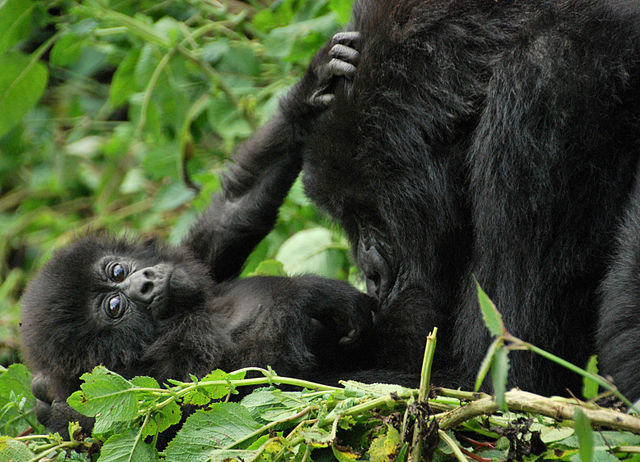GORILLAS IN THE MIST
When Dian Fossay came to Africa to study mountain gorillas in 1960s, there were less than 600 of them left in the wild and their numbers continued to decrease. In 1967, Karisoke Research Center was founded by Fossey in Rwanda's Virunga mountains and she started the process of habituation, getting gorillas used to the presence of humans. Thanks to this, scientists could visit gorillas to observe them, but also rangers could track them and keep an eye on them to provide medical help if needed. After the death of Digit, Fossey's favourite silverback, she established the Digit Fund to help finance anti-poaching patrols. The Digit Fund was later renamed to The Dian Fossey Gorilla Fund International, which continues to operate the Karisoke Research Center to this day. The intense conservation measures have helped not only to keep the mountain gorilla population stable, but even to increase in numbers. According to the latest census, performed in 2015/2016, there are now at least 1004 mountain gorillas.

Since Fossey established the Karisoke Reseach Center, scientists have been continually collecting data on various aspects of gorilla behaviour and ecology. Monitored gorillas are visited by researchers for four hours every day, which results in an incredibly detailed knowledge about each individual.
Moreover, faecal samples of Karisoke gorillas are regularly collected for genetic identification, creating a very fine-scale genetic database. Isolating gorilla DNA from their faeces is no easy task, but thanks to the improving laboratory techniques we can now use even low-quality DNA to learn more about this critically endangered species.
“There is more meaning and mutual understanding in exchanging a glance with a gorilla than any other animal I know – they are so like us.”
Although there are now more than 1000 gorillas, it does not mean that they are safe. Besides all the other immediate threats, including hunting and struggling for space in the most densely populated country in Africa, gorillas might be dealing with consequences of small population size and inbreeding. The inbreeding, mating of related individuals, can result in a loss of genetic diversity and might negatively affect fitness and survival.
GENETIC DIVERSITY OF IMMUNITY GENES
My projects on mountain gorillas was focused on analyzing major histocompatibility complex (MHC) diversity in a large sample of Karisoke gorillas across several generations. MHC genes are among the most important and most diverse across the whole genome, because they code for proteins that present antigens on the cell surface, making them accessible to the T-cells. In other words, MHC molecules make sure that pathogens are recognized and taken care of by the immune system. To bind all sorts of pathogens, MHC diversity is very important and is maintained by balancing selection.

On the other hand, we know that mountain gorillas went through a population bottleneck, have had low effective population size, and now live in two isolated populations, where avoiding inbreeding is difficult. In my project, I was looking at how much MHC diversity do mountain gorillas harbour, for example compared to a larger and continuous population of Western lowland gorillas. And whether we can detect any change over several generations of monitoring in Karisoke.
My post-doc was supervised by Dr. Linda Vigilant at the Max Planck Institute for Evolutionary Anthropology
